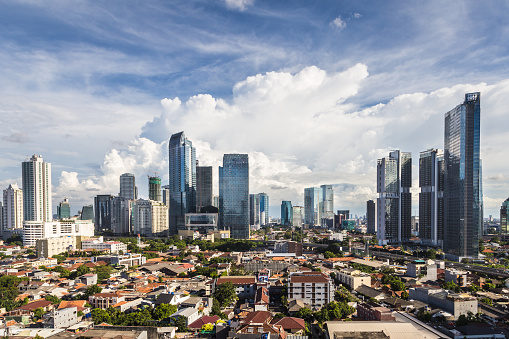A Look at the Indonesian Economy
Located in the region of Oceania, Indonesia is made up of more than 17,000 islands. It is surrounded by the Indian and Pacific oceans. The country includes parts of New Guinea, Sulawesi, Borneo and Java.
Economic history
During the past decade, there has been an increasing number of scholars who have studied the economic history of Indonesia. This study includes a range of topics, such as economic development, natural resources, and ethnic groups. It is important to look at the Indonesian economy’s past for understanding how it functions today.
A new textbook on the economic history of Indonesia provides an overview of Indonesia’s development over the past two centuries. The text is divided into three periods, which cover the colonial period, the New Order period, and the post-war period. The book uses new theoretical insights from institutional economics and new growth theory to examine the causes of stagnation in growth during the independence period. It also includes new data on income distribution and welfare, and discusses the price of instability after 1945.
The book also includes an introduction to the three main economic sectors in Indonesia. The book provides a history of trade networks and the institutional structure of the economy. It also discusses large-scale labor migration, estate agriculture, and petroleum production in Sumatra. The book concludes with a discussion on the impact of economic changes on the welfare of the poor.
The book also discusses Indonesia’s economic crisis in 1997. This was caused by a rapid increase in short-term foreign debt. The government did not respond to the crisis quickly enough, which led to a complete crisis. This crisis was attributed to political factors, as well as to a weak financial system.
The book also looks at Indonesia’s economic history, which includes the colonial period, the New Order, and the post-war period. The author divides the period into three periods, each of which has a different focus.
Regional autonomy
Various studies have found regional autonomy to be a significant factor in boosting economic growth. While the idea is good, there are some drawbacks. One of the main issues with fiscal decentralization is that the local authorities accumulate large amounts of unspent balances. This can hamper planning development projects locally. It also leads to increased illegal logging.
The regional autonomy movement is a major shift in the financial relationship between the central and local governments. The central government remains firmly in charge of many policy areas, though it will have less say in the negotiation of non-government organizations.
The study was able to measure the impact of regional autonomy in terms of public services, capital expenditure, economic growth, and welfare. The study used data from 461 counties, and used the partial least square method to measure the impact of regional autonomy.
The aforementioned is a very small sample size, and the study cannot be generalized to the entire nation. There are exceptions to this rule, though. Riau, for instance, has been very successful in implementing regional autonomy.
The Indonesian Constitution does not explicitly state that the election is reserved for the national government. In fact, most regions are considered local concerns by the central government. The national government retains power over some policy areas, such as defense, but these are not ‘exclusive’. The national government retains a lot of power over other policy areas, such as foreign policy and immigration.
The DPR has enacted a law hierarchy in Indonesia. It has adapted the 1999 legislation, though the original legislation was less onerous. Various amendments were introduced in 2004 to address shortcomings of the original legislation.
The Act of Concerning Regional Government was introduced as Pub. L. No. 25 in 2000. The Act is considered to be the ‘feet-up’ to the regional autonomy movement. It is a good example of a legislative feat that encapsulates the complexity of Indonesia’s legal landscape.
Commodities-based extraction and manufacturing industries
During the 1980s, Indonesia embarked upon an export-oriented industrialization program. In addition to expanding its manufacturing base, Indonesia also embarked on a series of structural reforms. As a result, the country’s manufacturing sector grew to account for nearly 65 per cent of its total exports by 1997.
However, Indonesia’s exports have been declining over the past two decades. The declining trend can be attributed to several factors, including cyclical factors, declining competitiveness, and structural factors. The following section will examine the factors that contributed to the decline of Indonesia’s exports.
The country’s comparative advantage in the manufacturing sector has declined. However, Indonesia has gained comparative advantage in other sectors. For example, Indonesia gained comparative advantage in the electrical machinery sector in the early 1990s. The country’s manufacturing industry accounted for more than half of the nation’s exports in 1992.
Moreover, Indonesia has developed comparative advantage in the resource-based manufacturing sector. Indonesia is a major global producer of plywood and plywood products. In addition, Indonesia’s manufacturing sector is a major source of raw material exports.
Indonesia has a rich endowment of natural resources. However, Indonesia’s economy has not been fully diversified away from oil. Oil exports still account for nearly one-quarter of Indonesia’s exports. The country’s exports of oil decreased dramatically in 1998.
Indonesia’s exports of raw mineral products have also declined. However, Indonesia’s exports of downstream products have risen significantly. These products are associated with a high degree of domestic demand. This shift in Indonesia’s export orientation has been driven by the country’s growing domestic demand. The country has reduced its reliance on raw mineral exports, shifting to an upward trend of exports of value-added products.
Despite these gains, Indonesia’s competitiveness and country effect were weak during the 2014 entry into force period of its export taxes policy. The country’s exports of raw mineral products still covered four percent of world import demand in 2012. The decline of Indonesia’s raw mineral commodity exports suggests that the country is not sufficiently market-powerful in all mineral sectors.
IMF pressure for cuts to basic consumer commodities
Despite the ongoing turmoil in the world’s largest economy, the IMF is still pressuring Indonesia to cut subsidies for basic consumer commodities. Several countries have introduced similar measures in response to the spike in prices. Those in the commodity exporting business are feeling the pinch.
As is the case with all policy initiatives, the specifics will vary from country to country. In some instances, a more direct approach may be necessary. In other cases, the use of flexible exchange rates or macroprudential policies may be enough to cushion the blow.
For most countries, the most important item to focus on is protecting the most vulnerable households. Among the measures to do this include increasing access to social safety nets and food subsidies. The IMF’s recommendations are more specific. It’s a good idea to take the opportunity to strengthen the country’s food supply and try to use food reserves when they are available.
The IMF is also recommending that Indonesia restructure its banking system. This will require reforming existing subsidies and breaking up monopolies. This is the IMF’s way of telling the Indonesian government that it cannot renew the loan program without a few assurances.
The most important thing to remember is that the IMF’s recommendations will only work if governments act on them. A few governments are already doing the right things, such as reducing the size of the government and cutting taxes. But policymakers need to remain agile and data-dependent. Otherwise, they may end up causing more harm than good. This is especially true if they do the wrong thing.
In general, the IMF’s recommendations are the most significant things that governments can do right now to improve their economic performance. It’s a good idea to make the most of every opportunity to boost economic growth at home, especially since a market panic could have damaging effects abroad.
Current interest rates
Unlike many Asian economies, Indonesia is taking a relatively slow approach to interest rate hikes. This decision is based on the central bank’s commitment to protect the rupiah against a stronger US dollar. It is also due to robust domestic demand dynamics.
Indonesia’s economy grew for the fourth straight quarter in January-March. Its trade surplus rose to $4.99 billion in September, beating expectations. It has benefited from once-steep commodity prices. However, as the global slowdown deepens, the tailwinds will begin to fade.
Indonesia’s inflation rate reached a seven-year high of 4.94% in July. The core inflation rate increased 3.31%. It was within the central bank’s target range of 2% to 4%.
In the current context, higher interest rates cannot be effective in easing inflation. Inflation is driven by higher food prices, beverage prices, and tobacco prices. It is also driven by global agriculture prices. The weak rupiah is also expected to drive inflation in Indonesia. The government has also subsidized fuel prices.
The central bank’s seven-day reverse repo rate climbed from 4.25% to 4.75% in October. The BI also raised its lending facility rate to 5.50 percent. The government also raised the price of Pertalite, Indonesia’s subsidised gasoline, to IDR 10,000 from IDR 7,500.
The central bank’s seven-day reverse repo rate is used to shape monetary policy in Indonesia. It is also used as a tool to influence the Interbank Overnight rate. This rate is a lending rate that central banks use to lend to deposit money banks. It is typically shown on an end of period basis.
The Bank of England is expected to meet between 16-17 November. While most panelists expect the Bank of England to increase rates before the end of the year, the bank also sees downside risks.



